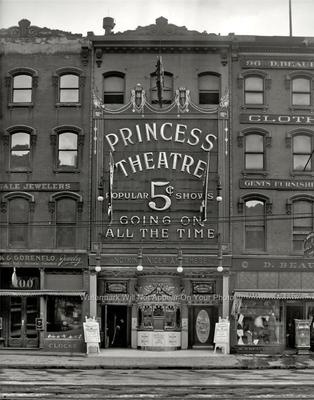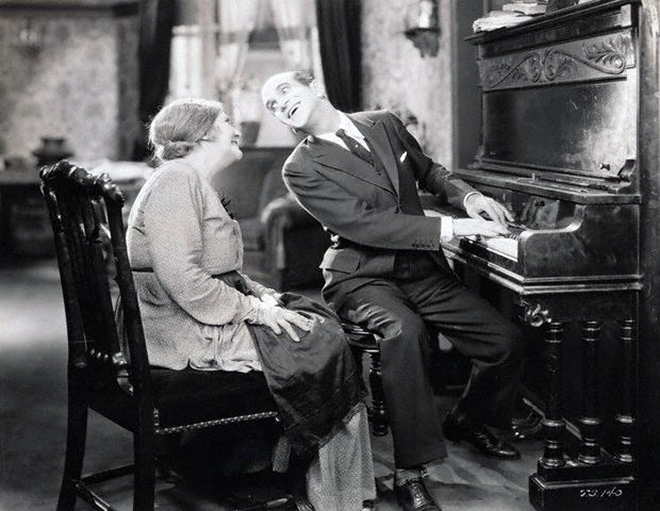Film and the First World War
In 1905 the first successful Nickelodeon was opened in Pittsburgh, this particular establishment had enough films to fill a half hour. These films were often switched out on a weekly basis so that audiences wouldn’t become bored seeing the same films over and over. After a few short years the United States saw a huge splurge in Nickelodeons, thousands of them had opened all around the U.S.

Photo: Pinterest
With films becoming more and more popular larger theaters solely meant for showing films were beginning to be built. These theaters included room for a pianist and possibly other musicians that could play music to accompany the film being shown. Building these theaters from the ground up also meant that the owners could make the buildings bigger, which would allow them to fit more people in per showing.
The 20th century marked the beginning of a whole new industry, actors began to be credited for their work, thus the film star was born. Of course the new century introduced many new techniques that filmmakers began to implement. Low-key and artificial lighting was introduced which allowed filmmakers to create and enhance the mood in specific scenes. Cross cutting was also refined, the famous D.W. Griffith began to use cross cutting in his 1908 film The Fatal Hour.

D.W. Griffith Photo: Biography
Feature length films didn’t gain popularity until the first World War, at this time period the industry began to grow. This growth caused theaters to continue getting larger as well as charging more money for admission. Film companies began to form including Universal Film which was formed in 1912. One of the most famous films to come out of this time period was D.W. Griffith’s The Birth of a Nation.
Introduction to the Sound Era
One of the most famous influential movies to date is The Jazz Singer, because it is considered the first successful film to incorporate sound in a feature film. The Jazz Singer of course sparked an interest in incorporating sound into films. Filmmakers tried very to perfect the process of sound within a film and by the 1929 Hollywood consisted of only “talkies.”

Still from The Jazz Singer. Photo: Wired
The transition into “talkies” was difficult for many. Some actors had a hard time transitioning because they didn’t know how to handle this new technology on screen. Others had made a name for their breathtaking on screen beauty, but their voices weren’t right for dialogue driven stories. Actors weren’t the only ones to struggle, the cost to film and produce “talkies” was fairly high which prevented many from making this transition. Other filmmakers couldn’t adjust to the new technology.
The introduction to “talkies” marked the beginning of the Golden Age of Hollywood. As silent films became less popular “talkies” started to take over the industry and become standard. Tomorrow we will take a look at the Golden Age of Hollywood.

